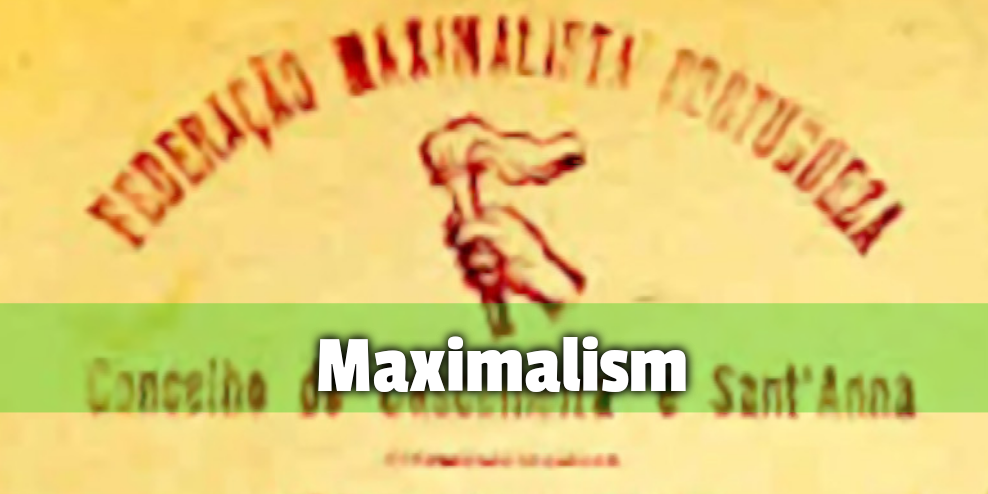Maximalism

A set of trends originating from different sources that identify with and give priority to what the Second International called "the maximum program": the abolition of the state and wage labor.
During the 19th century both Marxists and collectivist anarchists were usually described as maximalists... and not only by the reformist tendencies.
In Russia, the revolutionary faction of the social-revolutionaries, the party of the peasant revolution, will call itself socialist-maximalist and will end up integrating itself with the Bolsheviks, the Inter-center Committee and other groups in the process of formation of the Communist Party of Russia (Bolshevik) in 1917.
Unaware of the divisions of Russian socialism, the Belgian, French, Spanish, Portuguese and Italian press, including the socialist press, routinely identified the Bolsheviks as maximalists throughout the Russian revolutionary process and the first years after the revolution. The headline with which El Socialista, the official newspaper of the Spanish Socialist Workers Party, gave the news of the October insurrection was none other than: The Triumph of the Maximalists.

News of the October Revolution in "El Socialista", the official newspaper of the Spanish Socialist Workers' Party in November 1917.
The identification between the term maximalist and the Russian Revolution was such in the first epoch of the Third International that the first organization of the latter in Portugal, the first Portuguese communist party, founded in 1919, was officially called Federação Maximalista Portuguesa (FMP).
Something similar happened in Italy, where Bordiga and Gramsci referred to the Bolsheviks as maximalists at least until 1920. The pro-third international current then emerging in the Italian Socialist Party began to be called and self-recognized as maximalist. That is why the abstentionist fraction within this current -directed by Bordiga and origin of the later Italian Communist Left- proclaims its maximalist orientation and speaks regularly of the maximalist proletariat and of maximalist socialism. In Italy, however, the name remained associated to the centrist electoralist fraction headed by Serrati. In part because in 1920 the left-maximalists led the constitution of the Italian Communist Party and in part because Lenin criticized Serrati and his people as the electoral maximalists and the following generations, who no longer had it in mind that both right and left were known as maximalists at the time, began to abbreviate and call the centrist current and Serrati simply maximalists .
From 1924 the term ceases to be used by communists to refer to themselves and has an increasingly limited use. Generally, and always in the mouth of outsiders, it designates sectorial movements more or less organized by the International. It appears for example in references to the communist co-operators and other fractions driven by the policy of United Front. In Spain, it will reappear again in the 1930s used by the parties of the Republican petty bourgeoisie to refer to a confusing array that would include insurrectionary elements of anarcho-syndicalism and the Spanish Communist Left, and in 1937 to the forces participating in the revolutionary movement and defending it from the attacks of Stalinism and the Republican government (basically, bases of the CNT, the Friends of Durruti and the Spanish Bolshevik-Leninist Group). After 1937 the term leaves the political language altogether.
http://dictionary.marxismo.school/Maximalism